

In this special Halloween edition of The M.O.D. Squad, we are about to unfold the story of the M.O.D.s, a product of science which seeks to recreate a movie or television show after its own DVD image without reckoning upon long lines at the big box stores or delayed shipping due to out-of-stock items. It is one of the strangest tales ever told. It deals with the two great mysteries of creation―life and movies. We think it will thrill you. It may shock you. It might even horrify you. So if any of you feel that you do not care to subject your nerves to such a strain, now's your chance to, uh, well...we warned you.
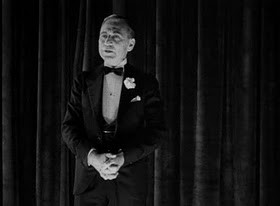
The twilight, in the blackly-shadowed Carpathian Mountains in Transylvania. High atop a craggy hill, the moldering, forbidding Castle Dracula balefully stares down as you struggle through the fog-shrouded thickets. Once inside the castle, you claw past the elaborate cobwebs and, mindful of the crumbling stairs, descend into the inky void that is the castle's bowels. There, a simple teak coffin lies upon the dirt floor of a vast Romanesque cellar, the foul stench of fetid decay momentarily holding you back. As you creep forward, fearful of the growing darkness outside, you slowly raise the coffin lid against its screeching, complaining hinges to find your prey: the undead Count Dracula, still asleep. Swiftly tearing open your satchel, you pull out your wooden mallet and a freshly-minted Warners' Archive Collection edition of The Snow Devils, ready to pound the M.O.D. into the rotted chest of the vampire, when the Count suddenly opens his eyes....
No, that's not it.
Stolid, picturesque Frankenstein Village, nestled in the towering, icy mountains of Switzerland. Having discovered the drowned body of poor little Maria (she loved flowers so), you urge on the enraged Frankensteinians to gather their pitchforks and torches and surge towards Frankenstein Castle, intent on finally ending that hideous, profane experiment of Dr. Henry Frankenstein's known simply as "the monster." You lead the way towards the old mill watchtower, where you spy the ungodly creature on high, hoisting the unconscious doctor over its head, only to see the patchwork ogre throw its own creator over the railing to the windmill blades below. Realizing that only the purifying fires of hell will destroy this...this thing of ungodly science and technology, you implore your brethren to pull out their clean, chaste, almost...holy M.O.D.s like A Quiet Day in the Country or The Terminal Manand cast them upon the ground to be ignited in a conflagration that will surely end this fiend's savage rein....
Hmmmm....nah.
Okay. You've just ripped off your boss to the tune of 40,000 smackers and you're lam-assing your way out of Phoenix towards Cal-i-forn-eye-ayyyy (you'd hide the dough in your bra, but your breasts are so large there's no room). A blinding downpour necessitates a detour to the crappy byway highway Bates Motel ("See America Last" if you end up here...), where disarmingly goofy candy corn-cruncher Norman Bates offers you a room, cold sandwiches, and some awkward, uncomfortable chit-chat as you coolly assess his dorkiness. Feeling positively dirty after trapped mamma's boy Norman's din-din conversation, you escape back to your clean little cabin and strip down (hubba) for some showering action. Unwrapping the soap, you let the warm, cleansing water pour over your lush body as you decide once and for all to return the 40,000 clams you boosted. However...as you bathe that frankly incredible body that remains frustratingly below-frame, a blurry, matronly figure entering the john can be seen through the shower curtain, coming closer. Closer. With a M.O.D. of The Last Dinosaur in her raised hand as she viciously yanks back the curtain....
Uh...nope.
Okay, maybe the real Halloween for you won't be that horrifyingly cool, but it's fun to dream, isn't it? And you can certainly get started on that Halloween dream by ordering up some frightful M.O.D.s―like the ones we're going to review in this latest Squad edition (see how this all comes together?). So...into the belly of the beast with our special Halloween horror-themed M.O.D. Squad edition, chock-full of frightful reviews (wait a minute...), with the spotlight on the brilliant Italian psychological/splatter ghost story, A Quiet Place in the Country , offered exclusively from Warner Bros.' online Archive Collection (just remember to click on the titles for full reviews and places to buy):
A Quiet Place in the Country
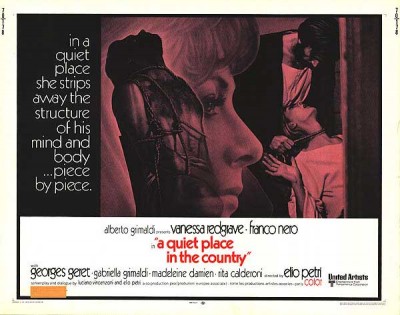
Brilliant psychological/supernatural horror movie. M-G-M and 20th Century-Fox, through their own M.O.D. (manufactured on demand) service, the M-G-M Limited Edition Collection, has released A Quiet Place in the Country (Un Tranquillo Posto di Campagna), the 1969 Italian-French shocker starring Vanessa Redgrave and Franco Nero, directed by Elio Petri (it appears here under a new banner for the Limited Edition Collection: World Films). A sensuous, scary, horrifying nightmare of artistic madness...or supernatural possession (?), A Quiet Place in the Country was totally new to me―and it blew me away. An original trailer is included for this beautiful widescreen transfer, but don't be mislead by the back cover of M-G-M's disc holder: A Quiet Place in the Country is presented here in its original Italian language track with optional English subtitles, as M-G-M states...but the original English dub is also available on the disc, too―very cool.
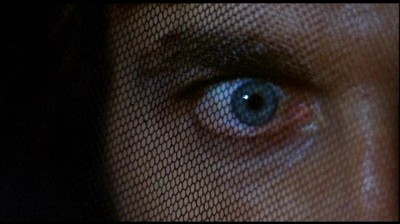
Leonardo Ferri (Franco Nero), is one of the top young avante garde painters in Milan, Italy...and he's quickly going crazy there; he hasn't completed a painting in two months. Threatened by his agent/lover Flavia (Vanessa Redgrave), who's insistent on keeping the touchy, mercurial artist productive while he's still the flavor of the month, Leonardo accepts an offer to work at a count's villa. However, upon arrival, he freaks out and leaves (the Count and Flavia made too big a deal of the arrangement, including inviting the press), being drawn to a crumbling, abandoned villa farther out in the country. Insisting that Flavia purchase the villa for him, Leonardo discovers from the property's caretaker, Attilio (Georges Geret), that the former owner, killed in an RAF air raid during WWII, was a young countess who was vilified by the townspeople for being sexually promiscuous. Quickly becoming obsessed with finding out who this woman was, Leonardo begins to lose his grip on reality...or is he being tormented by the young countess' ghost?
MAJOR MOVIE-RUINING PLOT SPOILERS WARNING!
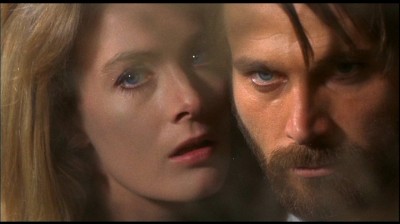
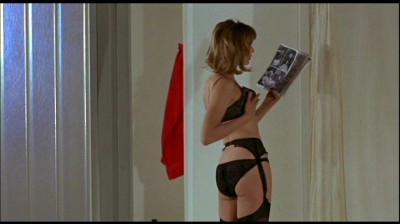
Prior to this disc showing up in my mailbox, A Quiet Place in the Country would have been just another title in director Elio Petri's list of films to me. Petri's The 10th Victim is a yearly favorite of mine, and Investigation of a Citizen Above Suspicion impressed me when I saw it back in college, but A Quiet Place in the Country was completely new to me (I didn't even know who starred in it until I saw the DVD cover). How cool, then, is it to find the kind of movie that hits all the marks for you―1960s European filmmaking, big international stars, a glossy, dazzling visual approach to sex and violence―when you never even heard of it before? That kind of discovery is exactly what the studios' M.O.D. library services should be about: little-seen titles that need to be more readily available.
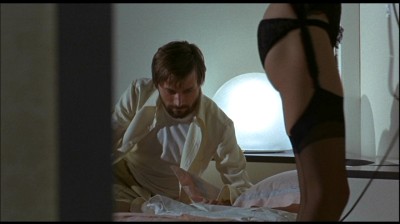
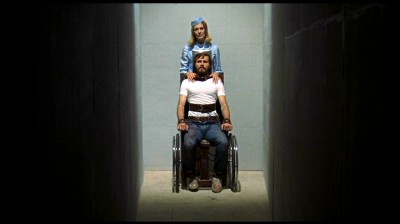
Whether or not you take A Quiet Place in the Country as a ghost story or a psychological horror story (or a combo of the two) is entirely up to you, because director and co-writer Petri, along with scripter Luciano Vincenzoni (The Good, the Bad, and the Ugly, Duck, You Sucker) let you know right up front that A Quiet Place in the Country is going to be more of a self-reflexive commentary rather than a straight-ahead story―not a surprise from this ideas-focused director. With the credits rolling over superimposed splices, scratches and film leader tags, the opening shot of Nero, strapped to a chair, goes to close-up when Vincenzoni blatantly switches the rotating camera lens. That all looks very 60s European "film trendy" now, but it's also the equivalent of having a title card say, "Once upon a time..." It's fantasy. Everything is suspect in A Quiet Place in the Country because not only is the lead character obviously delusion, the director also remains resolutely deceptive and illusionary.
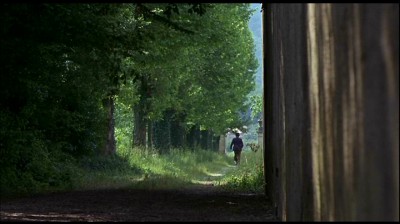
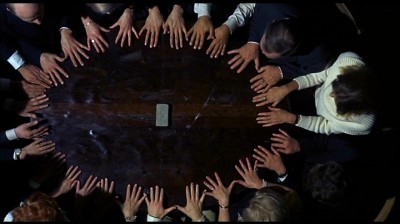
It isn't hard to get at the ideas Petri and Vincenzoni are throwing around here; they're fairly straightforward in their musings about artistic alienation and specifically emasculation in 1969's increasingly mechanized, electronicized western world. The opening sequence, which we learn is really a dream (or is it...), makes its point pretty clearly. Artist Nero, almost naked, is strapped down to a chair, unable to move, when his agent/lover Redgrave comes in from shopping, having bought several pointless gadgets ("a submarine television for scuba diving"). She plugs in all the appliances at his feet, turns them on, and then takes off her panties to turn him on, before he breaks free and tries to kill her―before she knifes him over and over again in the tub...with her clothes off...and then on again. Later, Nero has a vision (?) of Redgrave as nurse, wheeling him around, incapacitated, through the streets, after she's bought some more expensive items (no doubt from the commission she obtains from the paintings she keeps prodding him to execute). None of this is too terribly hard to get at, but it's presented within the framework of Nero being a schizophrenic (and later possibly haunted by a real/unreal ghost), so we're constantly kept off guard by the flashforwards and delusions as to Petri's intentions: message, or story.
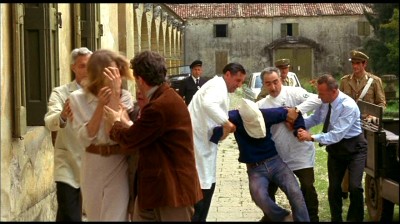
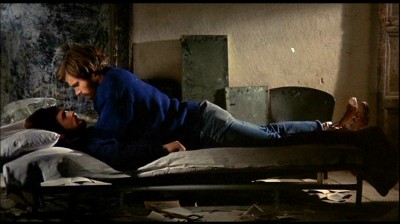
Another theme Petri explores here is the connection between pornography and violence. Having bought soft-core nudie mags (Petri has the magazines "announce" themselves over the soundtrack, as if they're running through Nero's head), Nero heads to bed and reads the stories in an exaggerated, dramatic voice, scorning them (while at the same time, obviously, enjoying the pictures), while Redgrave joins in, eventually becoming turned on herself―which immediately disgusts Nero (which really shows he's crazy, because Redgrave looks incredible here in her black lingerie). When Nero needs to get jacked-up to work (after his recounted dream is laughed at by Redgrave before she orders him to paint again, like an employee or a little boy), he looks at alternating slides of naked women and war atrocities (one assumes they're from Vietnam). And when he does make love to Redgrave, it becomes a parody of what he sees in the books, roughly pushing her face away and choking her. He's angry at her for turning him into a commodity (he states he doesn't work for profits when she insists she needs a certain number of paintings from him); he's turned on by the pornography he looks at, and he's terrified of her sexual hold over him that has contributed to his artistic indecisiveness. The movie's early sequence showing Nero painting (big, wet, red messy paintings, full of water/sexual symbolism that he constantly paints over in indecision) is brilliant, showing inspiration running afoul of artistic frustration and almost certainly madness (Petri is smart enough to keep this all in perspective, though; later in the movie, when someone compliments Nero on his paintings illustrating the "crisis of humans," he sarcastically rejoins they illustrate the crisis of "horse turds").
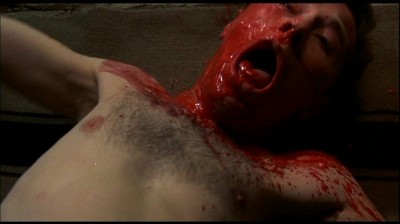
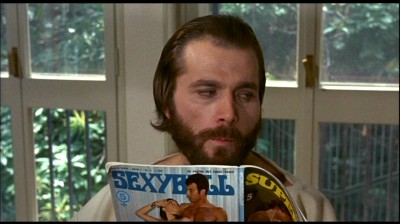
Once Nero takes up residence at the crumbling villa, and becomes obsessed with the story of its former occupant, the ghost story elements of A Quiet Place in the Country kick in through several remarkable sequences where Petri, with the aid of cinematographer Luigi Kuveiller, editor Ruggero Mastroianni, and Ennio Morricone's discordant, chaotic score, thoroughly discombobulate the viewer as to whether or not a ghost is haunting Nero, or if he's imagining it all in his delusional sickness. Again, reality and illusion are indistinguishable from each other here. At one point, it seems certain that some entity has spilled Nero's paints and made a complete mess of his workroom...but at the brilliantly-staged séance scene towards the end of the film, it seems certain Nero was behind all of the ghostly occurrences after all (Nero walks the line perfectly here between sympathetic, sick artist, and possessed lunatic).
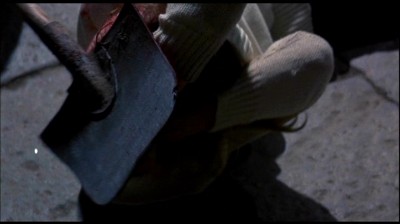
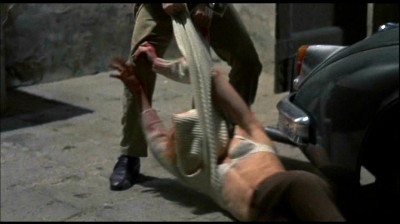
Petri even goes so far as to shoot the entire final act as if he's concretely saying everything is in Nero's head (Petri shows Nero making love to the ghost of the countessa, before he jump cuts to Nero making love to no one...and then himself!), right down to the "imagined" slaying of Redgrave, an absolutely horrifying, nauseating sequence that reminds one of the Manson killings in its savage brutality (Nero, bearded like Manson, flails away at Redgrave with a shovel, bonging her repeatedly in the face―looks quite real―before he drags her lifeless body onto the kitchen table and chops it up for the Frigidaire®). However, the next morning, Nero finds her quite alive as the cops come (first for the caretaker, before Nero, in a nice bit of Hitchcockian suspense and misdirection), ready to lock him up in the nut house. As he paints away, satisfying his orderly's request for small, little paintings in exchange for nudie mags, we see Redgrave collecting the paintings from the orderly, and commenting positively on Nero's work (another jab at modern commerce versus artistic freedom). Did the ghost push him over the edge, or did he do it himself? Was there a ghost? Did he really murder Redgrave, or imagine it? Maybe he's been in the asylum the entire time, and this is all just another fevered delusion, like the opening dream sequence? It all depends on how you look at it....
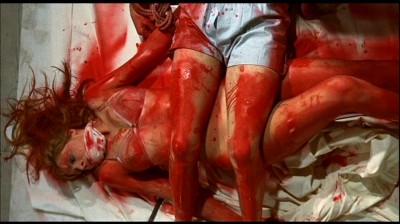
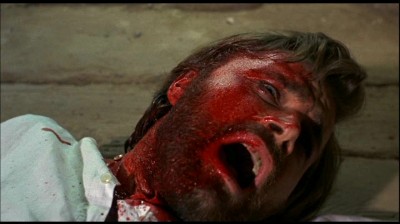
The DVD:
The Video:
The anamorphically enhanced, 1.85:1 widescreen image for A Quiet Place in the Country looks quite good, with solid color, a sharpish image, and only minor dirt and scratches.
The Audio:
The Dolby Digital English 2.0 mono audio track is re-recorded at a high level, with all dialogue quite clear and sharp. Again: don't let the back of the DVD cover fool you―both the original Italian language track and the English dub are available here, both with English subtitles. Very nice for one of these M.O.D. presentations.
The Extras:
There's an original trailer for A Quiet Place in the Country. It's just as creepy as the movie.
Final Thoughts:
Disturbing, sensational aural/visual experience. Writer/director Elio Petri creates a completely unstable environment for his tale of personal madness, artistic chaos, and supernatural violence. Vanessa Redgrave and Franco Nero are beautiful to look at here. One of a kind. On content alone, I'm giving A Quiet Place in the Country our highest rating here at DVDTalk: the DVD Talk Collector Series award.
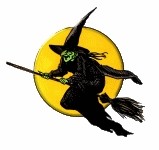
It's all horror, all the time here for this Halloween edition of The M.O.D. Squad, so let's drive a stake through our recent horror M.O.D. reviews:
DVDTalk editor John Sinnott reviews Lon Chaney's little-seen 1925 effort, The Monster, The Snow Devils, the final film in the Gamma I Quadrilogy, and the Rankin-Bass/ Tsuburaya production of The Last Dinosaur:
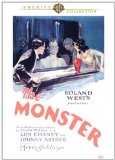 1925 was a good year for Lon Chaney. He had become a big name star with The Hunchback of Notre Dame in 1923, and made the unsettling He Who Gets Slapped the following year. In '25, he would release two more outstanding films: The Phantom of the Opera and The Unholy Three, along with a more minor film, The Monster, opposite comedian Johnny Arthur. This lesser know Chaney film is now available through Warner's Archive Collection. The Monster tries to meld Arthur's humorous milksop character with some chilling "old house" aspects, and while each of them works on their own, the two elements don't really mix well (did the producer or director really think they would?). Even with this flaw, Chaney gives a great performance and the film is actually very enjoyable.
1925 was a good year for Lon Chaney. He had become a big name star with The Hunchback of Notre Dame in 1923, and made the unsettling He Who Gets Slapped the following year. In '25, he would release two more outstanding films: The Phantom of the Opera and The Unholy Three, along with a more minor film, The Monster, opposite comedian Johnny Arthur. This lesser know Chaney film is now available through Warner's Archive Collection. The Monster tries to meld Arthur's humorous milksop character with some chilling "old house" aspects, and while each of them works on their own, the two elements don't really mix well (did the producer or director really think they would?). Even with this flaw, Chaney gives a great performance and the film is actually very enjoyable.
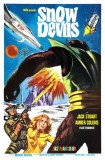 With the release of The Snow Devils, Warner Archives has put out the final film in the Gamma I Quadrilogy on DVD. That's quite a treat for fans of hokey 60's sci-fi movies (and I usually abhor the term "sci-fi"... it sounds childish and shouldn't be used for films like 2001: A Space Odyssey, but in the case of these films, the term fits all too well). These four Italian films, War of the Planets, Wild, Wild Planet, War Between the Planets, and Snow Devils were directed by Antonio Margheriti in a period of weeks in 1965. Shot at the same time on a very limited budget (and freely reusing footage between the various movies), they aren't really sequels to one another, but they do all take place in the same shared universe of cars with plastic roofs and interplanetary space ships. And, as one might guess from the origin, these aren't the height of filmmaking as The Snow Devils clearly illustrates. Still, even for its faults, and there are many, the film is a wild ride. Partially bergfilme (a German genre of films involving mountain climbing), part spy film, part monster movie, and part outer space adventure, this movie tries to do it all.
With the release of The Snow Devils, Warner Archives has put out the final film in the Gamma I Quadrilogy on DVD. That's quite a treat for fans of hokey 60's sci-fi movies (and I usually abhor the term "sci-fi"... it sounds childish and shouldn't be used for films like 2001: A Space Odyssey, but in the case of these films, the term fits all too well). These four Italian films, War of the Planets, Wild, Wild Planet, War Between the Planets, and Snow Devils were directed by Antonio Margheriti in a period of weeks in 1965. Shot at the same time on a very limited budget (and freely reusing footage between the various movies), they aren't really sequels to one another, but they do all take place in the same shared universe of cars with plastic roofs and interplanetary space ships. And, as one might guess from the origin, these aren't the height of filmmaking as The Snow Devils clearly illustrates. Still, even for its faults, and there are many, the film is a wild ride. Partially bergfilme (a German genre of films involving mountain climbing), part spy film, part monster movie, and part outer space adventure, this movie tries to do it all.
 In 1977, Rankin/Bass Productions (the people who created a lot of the holiday stop-motion TV specials like Santa Claus Is Comin' to Town and Mad Monster Party decided to make the jump to the silver screen. They teamed up with Tsuburaya Productions, the Japanese company behind Ultraman, to create The Last Dinosaur. On paper it sounds like a "can't miss" scenario. The script concerns a lost prehistoric valley, just like the popular The Land That Time Forgot which did very well at the box office two years earlier; the cost could be kept down by using Tsuburaya's expertise in "man in a suit" monsters; and there would be a lot of interest on both sides of the Pacific. Unfortunately, the bad dialog, bad acting, and silly plot devices will leave most viewers either laughing or rolling their eyes. For that reason, if you're looking for a so-bad-its-good film, you should definitely give this one a try.
In 1977, Rankin/Bass Productions (the people who created a lot of the holiday stop-motion TV specials like Santa Claus Is Comin' to Town and Mad Monster Party decided to make the jump to the silver screen. They teamed up with Tsuburaya Productions, the Japanese company behind Ultraman, to create The Last Dinosaur. On paper it sounds like a "can't miss" scenario. The script concerns a lost prehistoric valley, just like the popular The Land That Time Forgot which did very well at the box office two years earlier; the cost could be kept down by using Tsuburaya's expertise in "man in a suit" monsters; and there would be a lot of interest on both sides of the Pacific. Unfortunately, the bad dialog, bad acting, and silly plot devices will leave most viewers either laughing or rolling their eyes. For that reason, if you're looking for a so-bad-its-good film, you should definitely give this one a try.
Kurt Dahlke looks at the cult Aussie horror flick, Razorback, and tasty, tacky, The Incredible Melting Man:
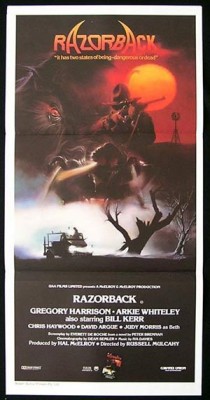 Fitting nicely into the pantheon of great Australian genre flicks, Razorback deserves its spot with the beasts, but not the relative obscurity it garnered. Now, Warner Brothers' Archive Collection will kindly send you a M.O.D. of this essential Aussie monster movie, a cult movie that deserves a wider audience. Featuring moody photography, a tense atmosphere, and a great, judiciously employed monster, Razorback rises above genre trappings and Jaws comparisons to become a tense horror-thriller in its own right. Recommended.
Fitting nicely into the pantheon of great Australian genre flicks, Razorback deserves its spot with the beasts, but not the relative obscurity it garnered. Now, Warner Brothers' Archive Collection will kindly send you a M.O.D. of this essential Aussie monster movie, a cult movie that deserves a wider audience. Featuring moody photography, a tense atmosphere, and a great, judiciously employed monster, Razorback rises above genre trappings and Jaws comparisons to become a tense horror-thriller in its own right. Recommended.
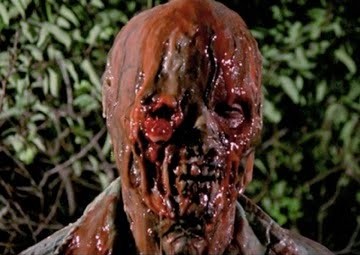 Maybe in 1977 light sabers were the thing, but for director William Sachs, the only thing the stars were good for was turning people into melting maniacs: monsters craving flesh as their faces turned to goo. OK, only one monster, and not really the next Universal Legacy Monster, as they wanted you to think, but with a bunch of misguided gore and unintentional hilarity that wallowed in ignominy, The Incredible Melting Man proved that Joe Six-pack would go to the theater specifically to see some dude's face melt. For that reason alone, any self-respecting horror fan should find this dumb-as-a-stump piece of midnight madness highly recommended...until an extras-packed Blu-ray comes along, that is.
Maybe in 1977 light sabers were the thing, but for director William Sachs, the only thing the stars were good for was turning people into melting maniacs: monsters craving flesh as their faces turned to goo. OK, only one monster, and not really the next Universal Legacy Monster, as they wanted you to think, but with a bunch of misguided gore and unintentional hilarity that wallowed in ignominy, The Incredible Melting Man proved that Joe Six-pack would go to the theater specifically to see some dude's face melt. For that reason alone, any self-respecting horror fan should find this dumb-as-a-stump piece of midnight madness highly recommended...until an extras-packed Blu-ray comes along, that is.
And Paul Mavis looks at Larry Cohen's A Return to Salem's Lot, Mark Harmon's Ted Bundy take in The Deliberate Stranger, the deliciously creepy TV movie, The Possessed, the kinda-gory 1977 Joe Don Baker actioner, The Pack, and Michael Crichton's cerebral sci-fi/horror, The Terminal Man:
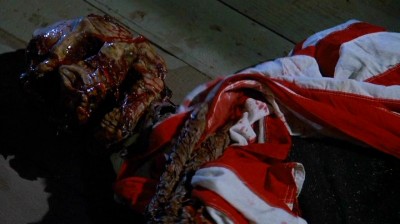 Co-written and directed by Larry Cohen, and starring Michael Moriarty, director Sam Fuller, Andrew Duggan, June Havoc, and Evelyn Keyes, A Return to Salem's Lot grooves along to its own quirky rhythms (not surprising considering its writer/director), offering up mild pleasures for those who may be looking for something outside the ordinary low-budget horror conventions. Too interesting to miss, but regrettably not very scary, A Return to Salem's Lot always has lots of intriguing ideas floating around, but not enough of them are developed to make much of a dent against Cohen's slipshod construction and tame thrills. Certainly worth a rental for anyone interested in Cohen, though.
Co-written and directed by Larry Cohen, and starring Michael Moriarty, director Sam Fuller, Andrew Duggan, June Havoc, and Evelyn Keyes, A Return to Salem's Lot grooves along to its own quirky rhythms (not surprising considering its writer/director), offering up mild pleasures for those who may be looking for something outside the ordinary low-budget horror conventions. Too interesting to miss, but regrettably not very scary, A Return to Salem's Lot always has lots of intriguing ideas floating around, but not enough of them are developed to make much of a dent against Cohen's slipshod construction and tame thrills. Certainly worth a rental for anyone interested in Cohen, though.
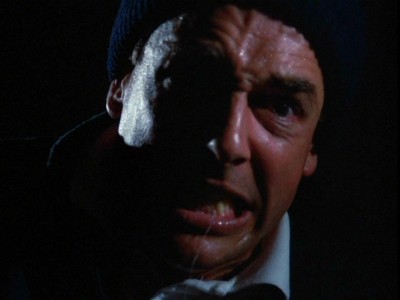 Necessarily sanitized but extremely effective, accurate account of one of America's most notorious serial killers. Warner Bros.' on-line M.O.D. (manufactured on demand) Archive Collection service has released The Deliberate Stranger, the 1986 NBC miniseries starring Mark Harmon as Ted Bundy, who admitted to murdering at least 30 women during a horrific four-year killing spree in the mid-1970s. Directed by veteran television helmer Marvin J. Chomsky, and with a superlative supporting cast including Frederic Forrest, George Grizzard, Ben Masters, Glynnis O'Connor, John Ashton, Bonnie Bartlett, Billy Green Bush, and M. Emmet Walsh, The Deliberate Stranger still frightens, in no small part due to the remarkable change of image orchestrated here by handsome lead, Mark Harmon.
Necessarily sanitized but extremely effective, accurate account of one of America's most notorious serial killers. Warner Bros.' on-line M.O.D. (manufactured on demand) Archive Collection service has released The Deliberate Stranger, the 1986 NBC miniseries starring Mark Harmon as Ted Bundy, who admitted to murdering at least 30 women during a horrific four-year killing spree in the mid-1970s. Directed by veteran television helmer Marvin J. Chomsky, and with a superlative supporting cast including Frederic Forrest, George Grizzard, Ben Masters, Glynnis O'Connor, John Ashton, Bonnie Bartlett, Billy Green Bush, and M. Emmet Walsh, The Deliberate Stranger still frightens, in no small part due to the remarkable change of image orchestrated here by handsome lead, Mark Harmon.
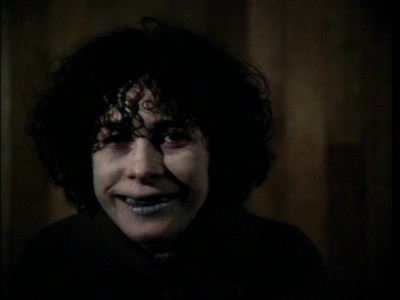 Excellent made-for-TV shocker. Warner Bros.' Archive Collection was made for abandoned movies like The Possessed, the 1977 supernatural thriller from the ABC network, starring James Farentino, Joan Hackett, Claudette Nevins, Eugene Roche, the dewy Ann Dusenberry, and just-a-few-short-weeks-away-from-international-mega-superstardom, Harrison Ford. Reminiscent, certainly, of The Exorcist, The Possessed gets its own seriously creepy little vibe going, with an intelligent script, surprisingly effective special effects, top-notch performances, and a genuinely unsettling, scary ending. How about that for an almost-forgotten little made-for-TV movie?
Excellent made-for-TV shocker. Warner Bros.' Archive Collection was made for abandoned movies like The Possessed, the 1977 supernatural thriller from the ABC network, starring James Farentino, Joan Hackett, Claudette Nevins, Eugene Roche, the dewy Ann Dusenberry, and just-a-few-short-weeks-away-from-international-mega-superstardom, Harrison Ford. Reminiscent, certainly, of The Exorcist, The Possessed gets its own seriously creepy little vibe going, with an intelligent script, surprisingly effective special effects, top-notch performances, and a genuinely unsettling, scary ending. How about that for an almost-forgotten little made-for-TV movie?
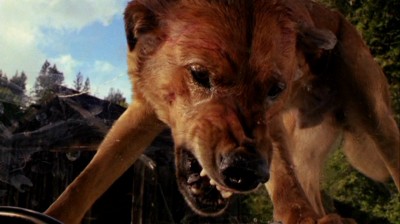 Lassie Come Home...So You Can Rip My Face Off!. It gets a little silly towards the end...but the dog attacks are great. Warner Bros.' essential Archive Collection of M.O.D. (manufactured on demand) library titles has released The Pack (also known as The Long Dark Night), the 1977 "man versus nature" reworking of The Birds and Jaws, starring Joe Don Baker. Directed with a lot of verve by Enter the Dragon's Robert Clouse (who also wrote the screenplay based on the better book by David Fisher), The Pack may have its seemingly obligatory genre lapses of logic, it may not deliver the gore we've become accustomed to for this kind of movie; and its 70s genre conventions may amuse us...but it's suspenseful enough, and the dogs deliver the goods. Perfect fall/Halloween viewing for the nostalgic out there.
Lassie Come Home...So You Can Rip My Face Off!. It gets a little silly towards the end...but the dog attacks are great. Warner Bros.' essential Archive Collection of M.O.D. (manufactured on demand) library titles has released The Pack (also known as The Long Dark Night), the 1977 "man versus nature" reworking of The Birds and Jaws, starring Joe Don Baker. Directed with a lot of verve by Enter the Dragon's Robert Clouse (who also wrote the screenplay based on the better book by David Fisher), The Pack may have its seemingly obligatory genre lapses of logic, it may not deliver the gore we've become accustomed to for this kind of movie; and its 70s genre conventions may amuse us...but it's suspenseful enough, and the dogs deliver the goods. Perfect fall/Halloween viewing for the nostalgic out there.
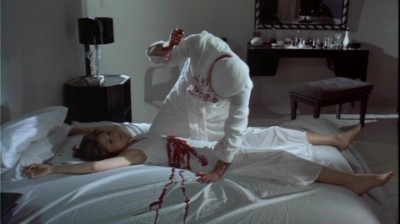 Cold, impersonal, distant Frankenstein re-imagining―and a fairly perverse jab at its horror/suspense genre conventions. Warner Bros.' Archive Collection, their M.O.D. (manufactured on demand) service, has released The Terminal Man, the 1974 adaptation of author Michael Crichton's 1972 novel, written and directed for the screen by Michael Hodges, and starring George Segal, Joan Hackett, Richard Dysart, and Jill Clayburgh. Not successful with either the public or the critics when first released, The Terminal Man plays well today as a rigidly-controlled visual experience, with a positively ruthless hands-off demeanor...but that diffident stance and crushingly bleak viewpoint turns off a lot of viewers. Writer/director Mike Hodges doesn't want you anywhere near this film (and don't you have any genre fun!), and that's a daring move for what everyone involved was probably expecting from this Michael Crichton adaptation: another exciting Westworld-type thriller. Definitely an acquired taste, and there are problems with the script...but the overall effect is chilly, and chilling.
Cold, impersonal, distant Frankenstein re-imagining―and a fairly perverse jab at its horror/suspense genre conventions. Warner Bros.' Archive Collection, their M.O.D. (manufactured on demand) service, has released The Terminal Man, the 1974 adaptation of author Michael Crichton's 1972 novel, written and directed for the screen by Michael Hodges, and starring George Segal, Joan Hackett, Richard Dysart, and Jill Clayburgh. Not successful with either the public or the critics when first released, The Terminal Man plays well today as a rigidly-controlled visual experience, with a positively ruthless hands-off demeanor...but that diffident stance and crushingly bleak viewpoint turns off a lot of viewers. Writer/director Mike Hodges doesn't want you anywhere near this film (and don't you have any genre fun!), and that's a daring move for what everyone involved was probably expecting from this Michael Crichton adaptation: another exciting Westworld-type thriller. Definitely an acquired taste, and there are problems with the script...but the overall effect is chilly, and chilling.
Stuart Galbraith IV looks at the colorful British thriller, Black Zoo, and the mesmerizing The Phantom of Hollywood:
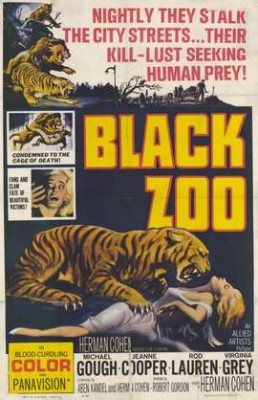
 1963's Black Zoo, is a colorful but absurd thriller with horror elements ... and an inescapable gay subtext common to all of producer Herman Cohen's films, at least from I Was a Teenage Werewolf (1957). His favorite leading man, Michael Gough is wildly over-the-top as a prissy, monomaniacal owner of a private zoo. The movie, however, is a tired reworking of concepts done more entertainingly though certainly not any better before. It's not as startlingly gruesome as Horrors of the Black Museum or as wonderfully goofy as Konga (Gough's ripe performance in that is a sight to behold), but it is in color and Panavision, and has a good cast. Long unavailable, for genre fans it's still recommended.
1963's Black Zoo, is a colorful but absurd thriller with horror elements ... and an inescapable gay subtext common to all of producer Herman Cohen's films, at least from I Was a Teenage Werewolf (1957). His favorite leading man, Michael Gough is wildly over-the-top as a prissy, monomaniacal owner of a private zoo. The movie, however, is a tired reworking of concepts done more entertainingly though certainly not any better before. It's not as startlingly gruesome as Horrors of the Black Museum or as wonderfully goofy as Konga (Gough's ripe performance in that is a sight to behold), but it is in color and Panavision, and has a good cast. Long unavailable, for genre fans it's still recommended.
For movie buffs, 1074's The Phantom of Hollywood, is an absolute must. Its premise is obvious, even inevitable―a shadowy figure lurking about a disused studio backlot, in a modern-dress Phantom of the Opera. But its timing, its weirdly autobiographical, even confessional approach, and use of MGM's actual backlot as it was literally being ripped apart and sold off, is ingenious, heartbreaking, and utterly mesmerizing. It helps that The Phantom of Hollywood is also an exceptionally good TV-movie, one of the best of its kind during the Golden Age for such things. The Phantom of Hollywood gets a great, full-frame transfer just in time for Halloween.
 As for The M.O.D. Squad, it's no different than Dracula or Frankenstein or the Mummy or Jason Voorhees: we will rise again.
Upcoming titles include some terrific new Bette Davis library titles from Warner's, including Juarez and The Sisters, and the cult sci-fi classic, No Blade of Grass.
As for The M.O.D. Squad, it's no different than Dracula or Frankenstein or the Mummy or Jason Voorhees: we will rise again.
Upcoming titles include some terrific new Bette Davis library titles from Warner's, including Juarez and The Sisters, and the cult sci-fi classic, No Blade of Grass.
See you next time, right here at The M.O.D. Squad!
Review Staff
| Newsletter Subscribe
| Join DVD Talk Forum
Copyright ©
DVDTalk.com All rights reserved
| Privacy Policy
| Terms of Use
| Manage Preferences
| Your Privacy Choices ![]()